Toilets are essential and ubiquitous parts of the modern home. However, many of us have no idea how they work! No worries, in this post, we have thoroughly researched this question to break down the parts of the toilet and how each part works.
Toilets can essentially be split into six main parts. However, within each part, especially the cistern, there are several other more complicated components to learn about. The main parts and subparts are as follows:
- Seat
- Seat cover
- Hinges
- Handle
- Rod/chain
- Flapper
- Cistern/tank
- Float
- Refill tube
- Overflow tube
- Tank cover
- Fill valve
- Inlet hose
- Bowl
- Inflow holes
- Outflow
- Base
- Wax ring
- Bolts
Keep reading the rest of this post for details on each part and how they work. We'll include a few tips on how to fix common toilet problems and how to tell if your toilet is working properly. Without further ado, let's get into it!
![Modern toilet in the bathroom, Parts Of A Toilet And How It Works [A Complete Guide]](https://homedecorbliss.com/wp-content/uploads/2022/03/Parts-Of-A-Toilet-And-How-It-Works-.png)
Toilet Parts Explained
Now we'll talk more about each toilet component and subcomponent and how each works.
Parts of a Toilet Seat
We sometimes add affiliate links and content that was curated and created by our team with the help of advanced ai tools to help showcase the best design styles.
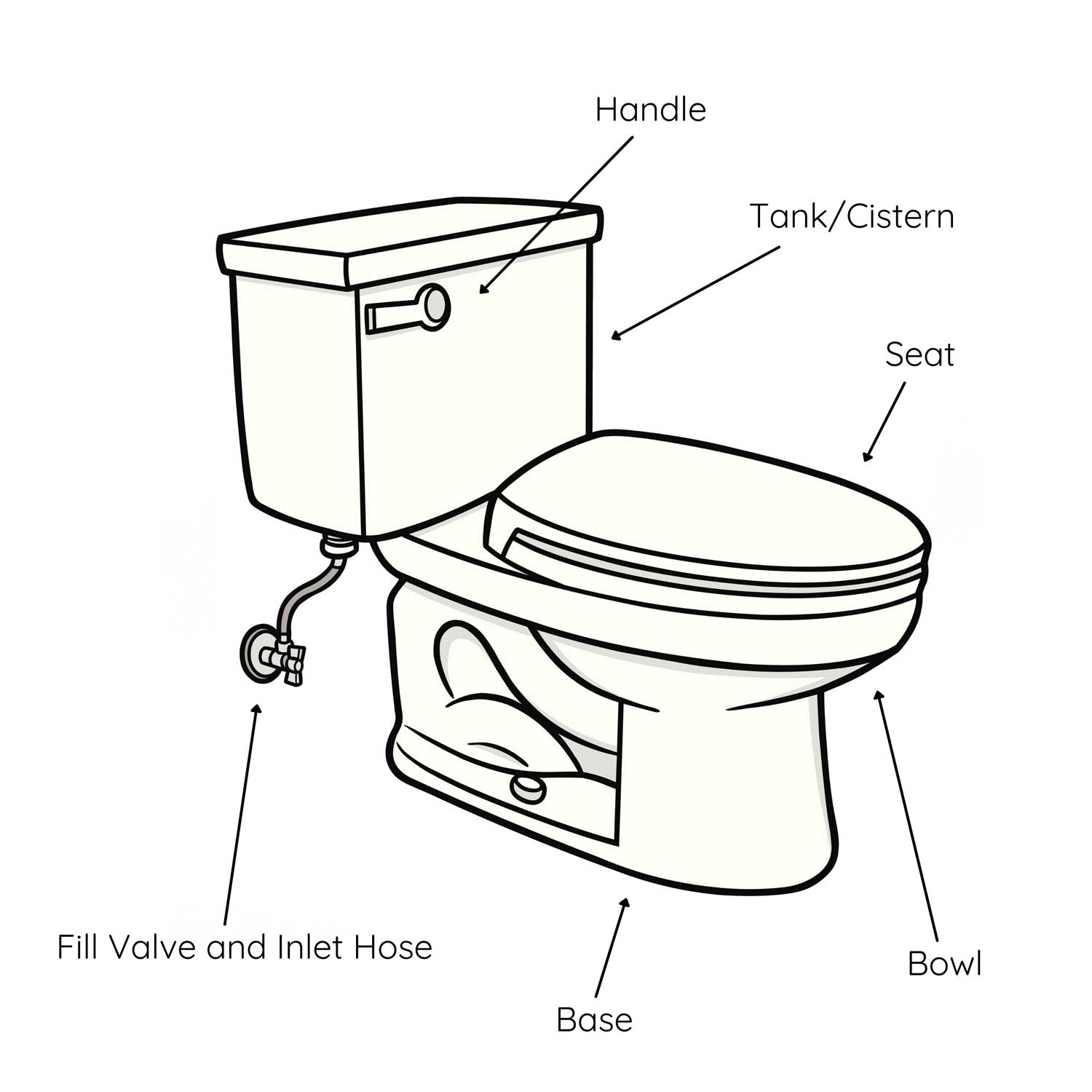
For obvious reasons, the toilet seat is one of the most important sections of a toilet. Generally, the feature that we commonly refer to as the seat is made up of the seat cover, hinges, and the seat itself.
Seat
Of all the parts of the toilet, the workings of this section are relatively straightforward. The seat itself is designed to comfortably hold a person as they do their business. If the seat begins to crack or come apart, the easiest choice is to simply buy a replacement.
Click here for a replacement toilet seat from Amazon.
Seat Cover
The seat cover is to cover the water and distasteful inner workings when the toilet is not in use. Often, homeowners elect to buy cloth covering to make the seat cover look more attractive.
Hinges
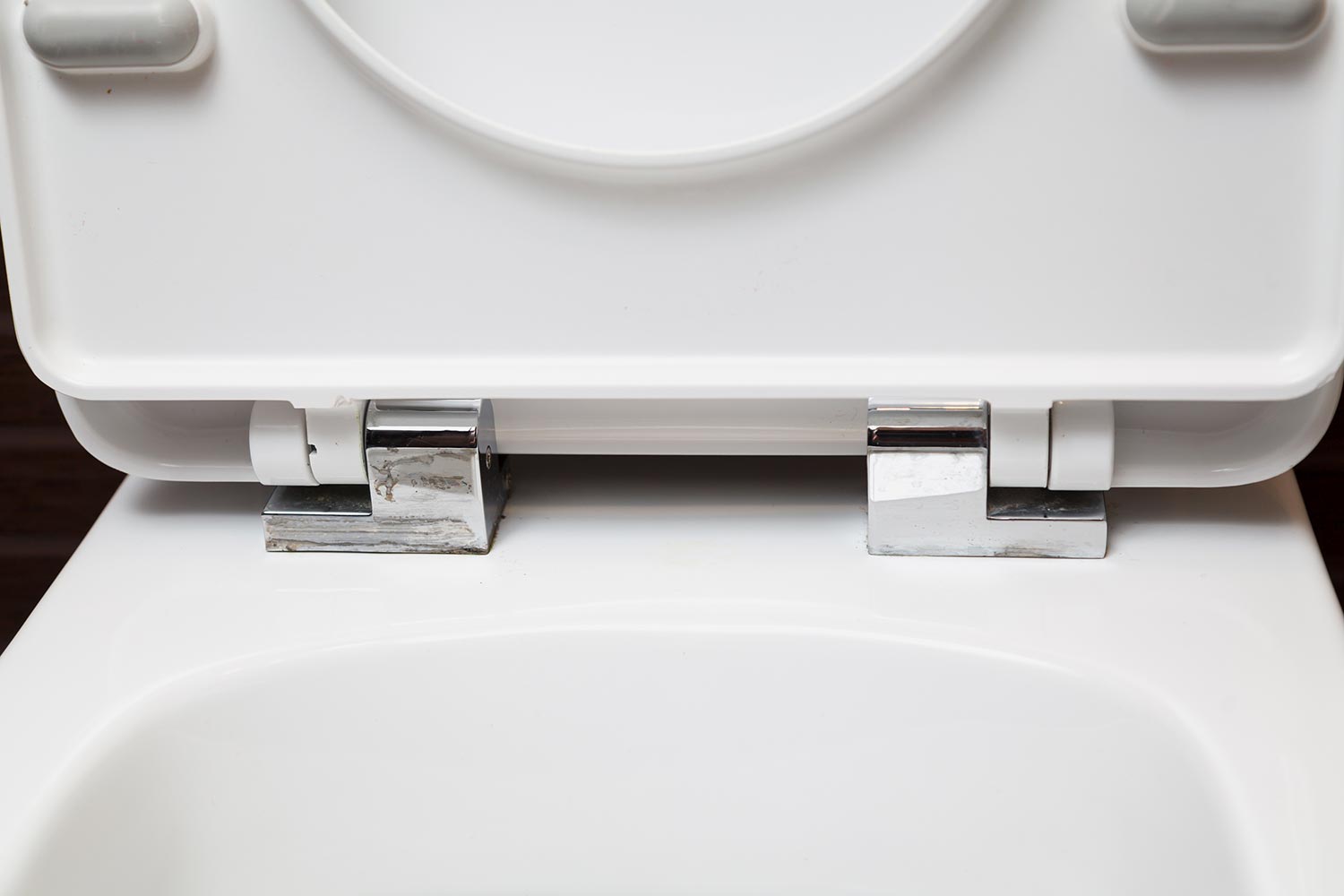
Toilet hinges allow you to open and close the seat and seat cover. These are usually bolted into the main part of the toilet. Generally, there are covers that are designed to hide the bolts. Often, the seat and seat cover snap into the bolt heads.
If your seat begins to wiggle, it is likely that it has come detached from the bolts or that those bolts are beginning to slightly loosen. To fix this, either snap the seat/seat cover back into place or tighten the bolts with a screwdriver or wrench.
Parts of a Toilet Handle
The toilet handle functions to flush the toilet when depressed. Altogether, the toilet handle system consists of a handle, a rod/chain, and a flapper.
Click here for a replacement toilet handle kit from Amazon.
Handle
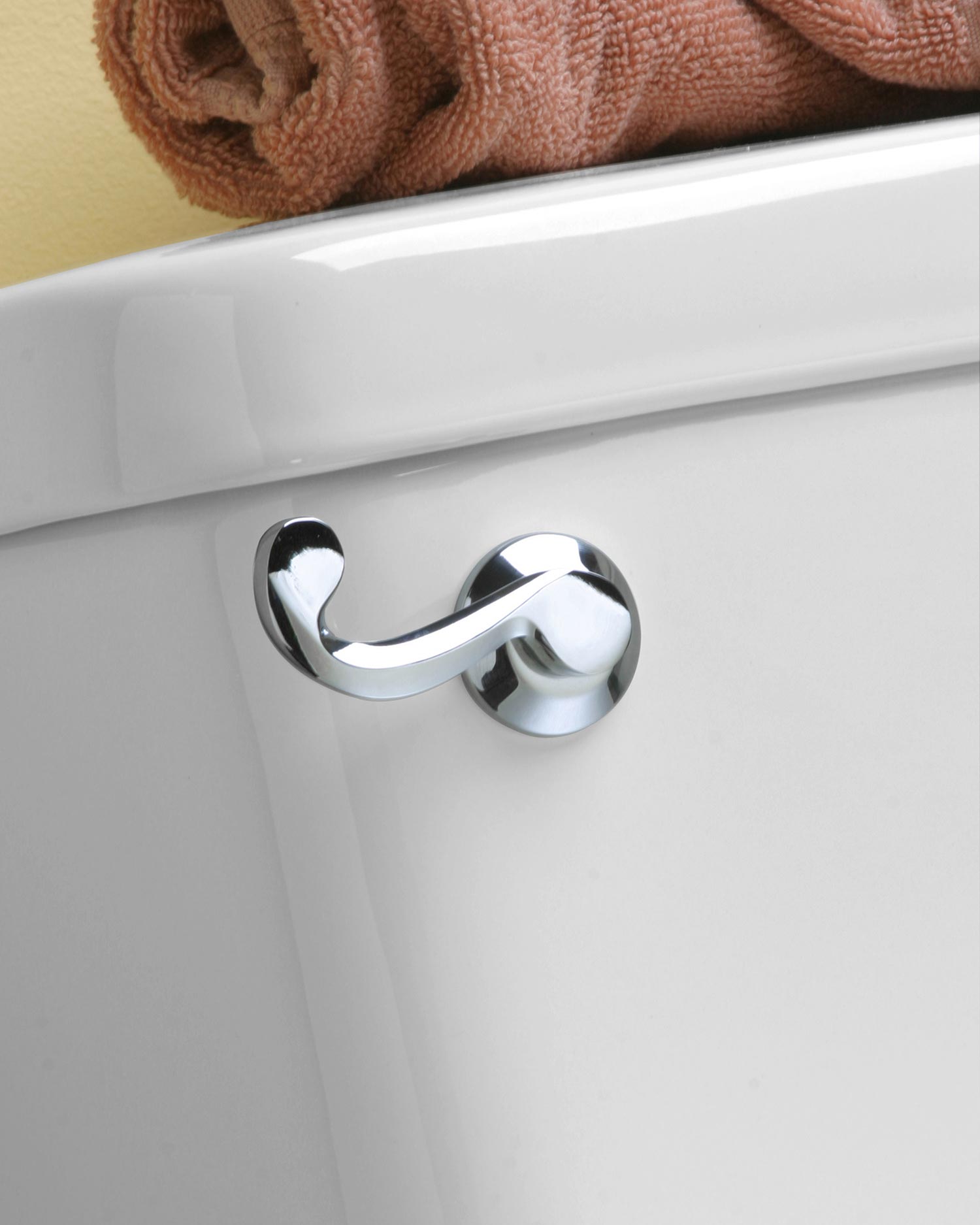
The toilet handle or push button is designed to activate a system that allows the tank's water to run down into the bowl and out the drain. In almost all models, this handle is designed to be pressed down instead of up.
Rod/Chain
The rod/chain, or other mechanisms, connects the handle to the flapper. On traditional-style toilets, this is usually a rod connected to a chain, but other systems are sometimes used. When the handle is depressed or the button is pushed, the connecting material lifts the flapper.
Flapper
The flapper is a rubber or rubber-like cover seated on the outflow hole of the toilet tank. When the flapper is down, no water can escape the tank. However, when the flapper is lifted by the handle, the water is allowed the flow out of the tank.
You can see this in operation if you flush the toilet with the tank cover off. Take note that when parts of the handle system fail to seat properly after a flush, your toilet may seem to constantly run at a trickle.
This may happen if the flapper falls down improperly or if the rod/chain or handle gets stuck in the improper position. Jiggling the handle shakes all of these parts and helps the flapper to reseat properly.
Parts of a Toilet Cistern/Tank
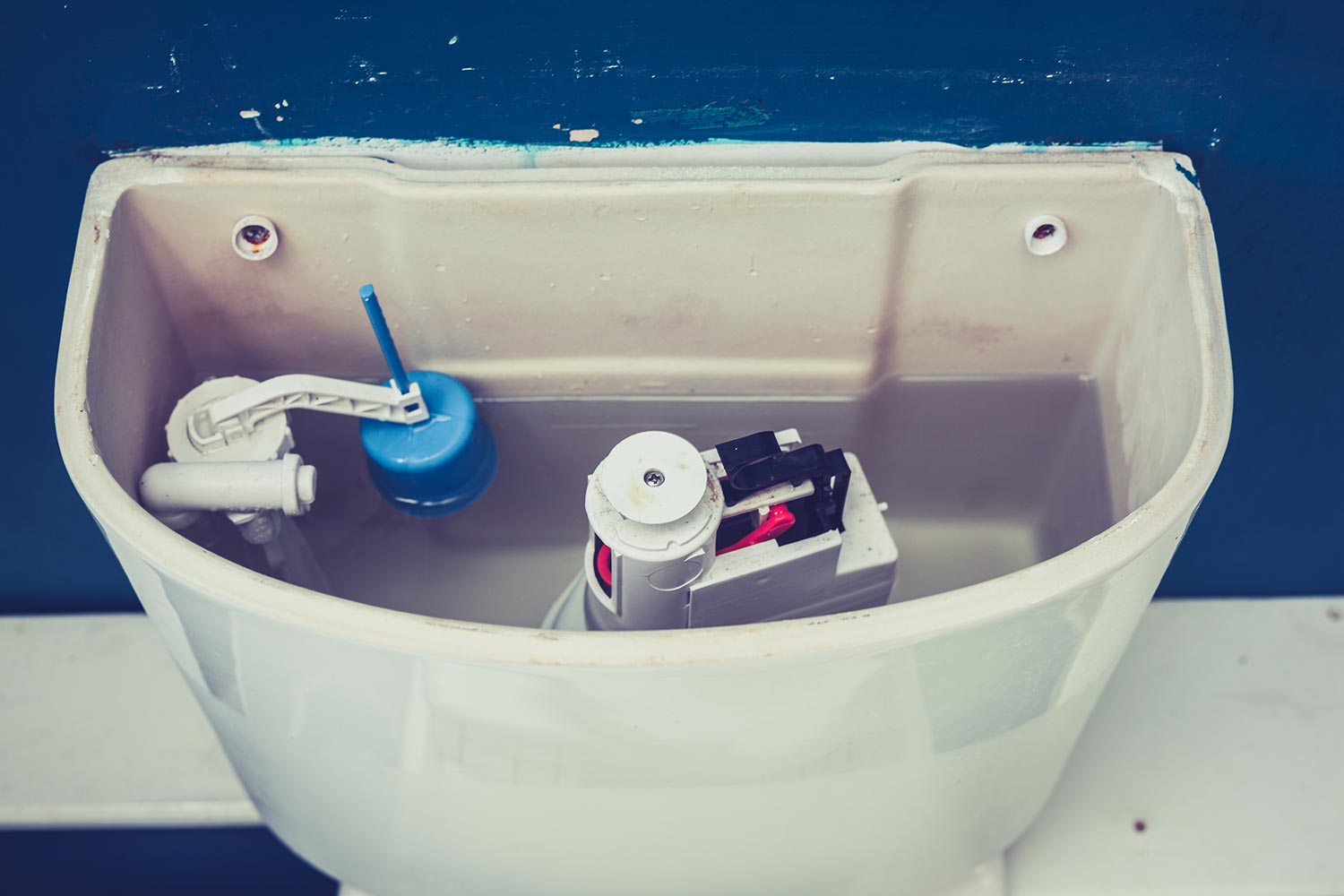
The cistern or tank is the part of the toilet that sits up and against the wall. Generally, this section serves to hold the reserve water needed for a flush and all the mechanisms used for flushing.
We have already discussed the toilet handle parts of the flapper and rod/chain that are actually stored in the cistern itself. In addition, the cistern holds a float ball, a refill tube, an overflow tube, and the tank cover.
Float
The float is quite easy to recognize, as it is a large floating ball that sits on the end of a stiff arm or is sometimes encased in a box on the refill tube. As the water fills into the tank, the float slowly rises on top of the water. Eventually, the tank will be full and the float will be near the tank's lid.
Once the float is at the tank's top, it shuts off the refill tube. Most float shutoffs are mechanical, so all you need to do is lift the float to the correct height and it will stop the inflow of water. This tip is sometimes handy for cleaning and troubleshooting your toilet tank area.
Click here for a ball float and fill valve replacement from Amazon.
Other times, a float or float ball may get tangled up or stuck in place due to corrosion and/or buildup or other toilet tank components. If this is the case, the water will continue to flow into the tank even when the tank is full. This creates a very annoying noise.
To fix this, investigate in the tank and manually move the float to its proper position. Sometimes, you may need to add oil to hinging parts or remove scale or buildup from those parts. It is always smart to wear a good pair of rubber gloves for this process.
Refill Tube
The refill tube is connected both to the toilet fill valve and the float. Overall, it serves to refill the tank and bowl with water after everything flushes. This tube is inside the tank and connects via the fill valve to the house cold water.
When the tube is open, it will simply pump water into the tank. Sometimes, this tube may get clogged and require cleaning.
Overflow Tube
The overflow tube is installed to give extra water a place to flow to. For instance, if the ball float gets stuck in a down position and water keeps flowing into the tank, that water must go somewhere.
Without the overflow tube, the water would eventually start flowing out of the tank's top. The overflow tube generally connects directly to your home's waste line system.
Tank Cover
The tank cover is usually a gravity lid that simply sits on top of the tank. It functions to keep pests and pets out of the tank and also makes the entire toilet neater and more easy to clean. When working on the toilet, it is usually best to lift the lid off and set it aside.
Parts of a Toilet Fill Valve
The toilet fill valve functions to allow water to flow into the tank. It is made up of the toilet fill valve and the inlet hose.
Fill Valve
The valve itself allows water to flow into the tank but only when the float is open. This valve is generally located in the tank or right where the tank meets the inlet hose.
Click here for a replacement fill valve from Amazon.
Sometimes, gunk or buildup may clog the fill valve. This is more likely to happen in locations with hard water that are prone to calcium buildup. If this happens, you can usually clean the valve out to fix the problem. Other times, you may have to replace the valve and/or valve assembly.
Inlet Hose
The inlet hose is usually near the floor behind the toilet. It includes an in-line manual shutoff. This is usually always left "on" unless the toilet is having issues or is being worked on.
Click here for an inlet hose from Amazon.
If the inlet hose begins to leak at all, you may need to use a wrench or your hands to tighten all of the fittings.
Parts of a Toilet Bowl
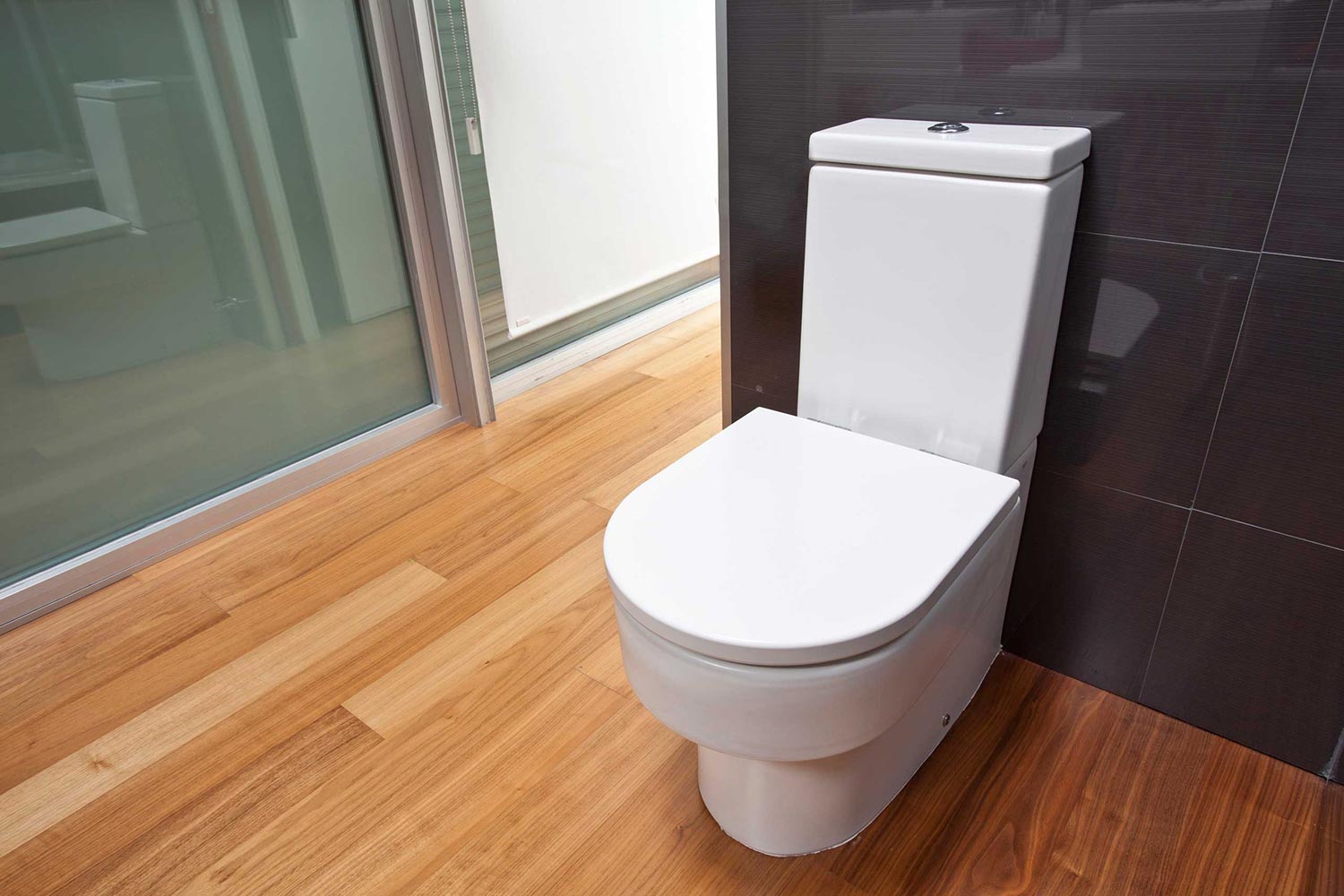
Finally, we are onto the toilet bowl. In addition to its obvious function, the toilet bowl also has outflow and inflow holes.
Inflow Holes
The inflow areas connect to the tank and are usually near the top edges of the toilet bowl. When the handle releases the flapper, the water flows through these holes and flushes the entire tank.
Further, as the tank refills, some water also drains into the bowl through these holes to prepare for the next toilet use.
Outflow
Out of sight, the outflow goes up and then down. This provides a trap to keep water in the bowl but still allows the water to flow out when the toilet is flushed. The outflow is located at the back and bottom of the toilet bowl.
One of the major and most common toilet issues is when the outflow gets clogged. When this happens, the water from the tank may continue to refill the toilet to the point that it overflows. Fortunately, some quick work with a plunger is usually all you need to fix the issue.
Parts of a Toilet Base
The base is nothing more than a sturdy place for the rest of the toilet and the toilet user to rest upon. Bases also include a wax ring and bolts.
Wax Ring
The wax ring is a gasket that allows the water to transfer from the toilet into your home's wastewater lines. Unless there is a problem with the toilet, you will probably never see this ring. However, if you see water seeping out under the toilet, the first step is to check or replace the wax ring.
Click here for a wax ring from Amazon.
Bolts
Finally, your toilet is usually bolted or somehow affixed to the bathroom floor. These bolts are often covered. If you notice the whole toilet wiggling around, it could be the case that the bolts need to be tightened. Other times, the wax ring may leak if the bolts become loose enough.
What are toilets made out of?
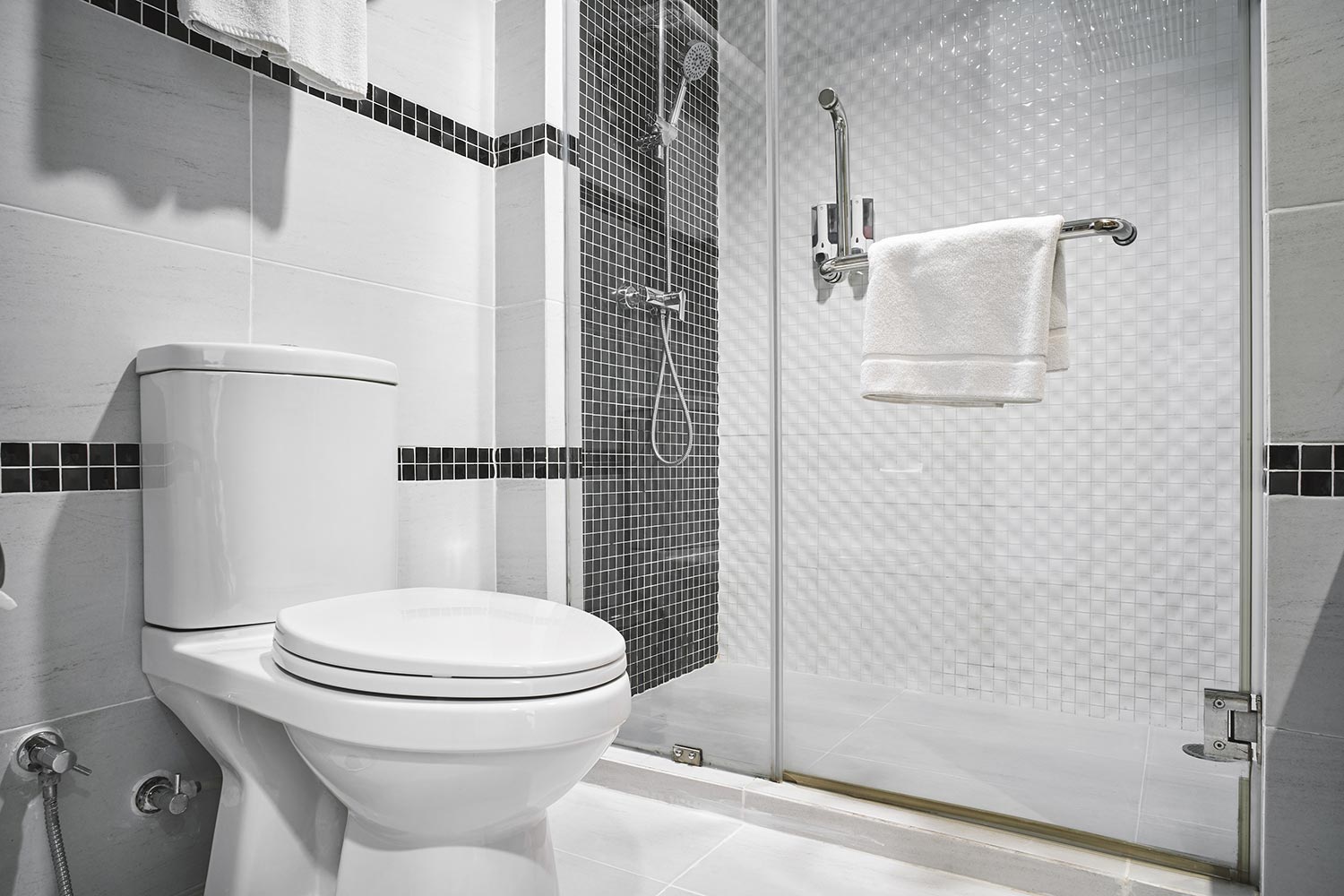
Most often, toilets are made out of ceramic. This material is durable, waterproof, affordable, and easily cleaned. Other times, toilets can be made out of plastic or stainless steel.
In Closing
In this post, we provided an overview of the main parts of a toilet including how each part works. Throughout, we also included some basic tips on how to fix common and simple toilet problems. Good luck!
To learn more about toilets, take a look at these other posts:
What Is The Best Toilet For A Basement Bathroom?
How To Fix A Cracked Toilet Tank, Bowl, Or Base [A Complete Guide]






